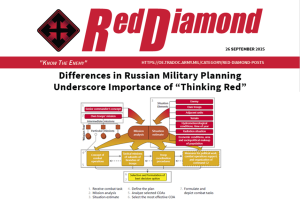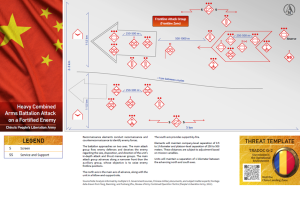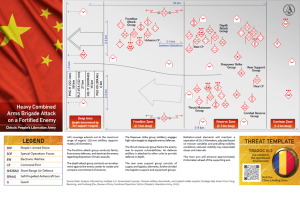North Korea’s Ukraine War Involvement Signals Escalating Cooperation Among U.S. Adversaries
Lionel Beehner
Distribution A: Approved for public release
File Size:
694 KB
File Type:
Page Count:
7
Share & Get The Message Out
This analysis examines the significant development of North Korea’s deployment of combat forces to Russia in support of the Ukraine conflict, beginning in late 2024. This marks a potentially dangerous new dimension of CRINK (China, Russia, Iran, North Korea) military cooperation, offering valuable battlefield experience to North Korean forces while bolstering Russia’s manpower.
Key Findings:
• Unprecedented Deployment: North Korea is the first nation since World War I to deploy combat troops to fight on Russian soil, sending an estimated 11,000 KPA soldiers, alongside significant munitions supplies.
• Strategic Alignment: The deployment signals a deepening strategic partnership between Pyongyang and Moscow, framed by Kim Jong Un as a defense of Russian territorial integrity linked to North Korea’s own security.
• Battlefield Experience: North Korean troops gained valuable modern warfare experience, initially in logistics roles, then rotating to front-line positions in the Kursk region.
• Asymmetric Convergence: CRINK members demonstrate a convergence around shared strategic aims (challenging U.S. influence) while pursuing divergent operational goals.
• China’s Cautious Approach: While sharing strategic goals with Russia and North Korea, China maintains a cautious distance from formal multilateral military commitments, prioritizing bilateral partnerships.
• Iran’s Ambivalence: Iran’s stance is driven by potential economic competition with North Korea in the munitions market, despite deepening strategic ties with Russia.
Implications for the U.S. Army:
The evolving CRINK dynamic presents several critical implications for the U.S. Army:
• Precedent for Unconventional Deployments: North Korea’s deployment sets a precedent for potential unconventional force deployments by adversarial actors.
• Shared Objective: CRINK states demonstrate a shared interest in undermining U.S. influence globally, even without a formal alliance.
• Strengthening Defense Ties: The deepening defense ties between Russia and Iran, particularly regarding drone technology, signal potential for future collaboration.
• Exploitable Fractures: Variability in CRINK cooperation (China’s limited involvement, Iran’s neutrality) offers opportunities to exploit fissures within the axis.
• Evolving Threat Landscape: This development necessitates a re-evaluation of how the U.S. views and plans for future adversarial coordination, recognizing the potential for multitheater conflict.
Related Products
FY 2025 Operational Environment Running Estimate
How Russia Fights in Large-Scale Combat Operations
T2COM OE Threat Assessment 1-1, How China Fights in Large-Scale Combat Operations
Exploiter Series: Sociocultural Exploitation of Bangladesh
Differences in Russian Military Planning Underscore Importance of “Thinking Red”
China’s People’s Liberation Army Heavy Infantry Company Attack on a Fortified Enemy Threat Template
China’s People’s Liberation Army Heavy Combined Arms Brigade Attack on a Fortified Enemy Threat













